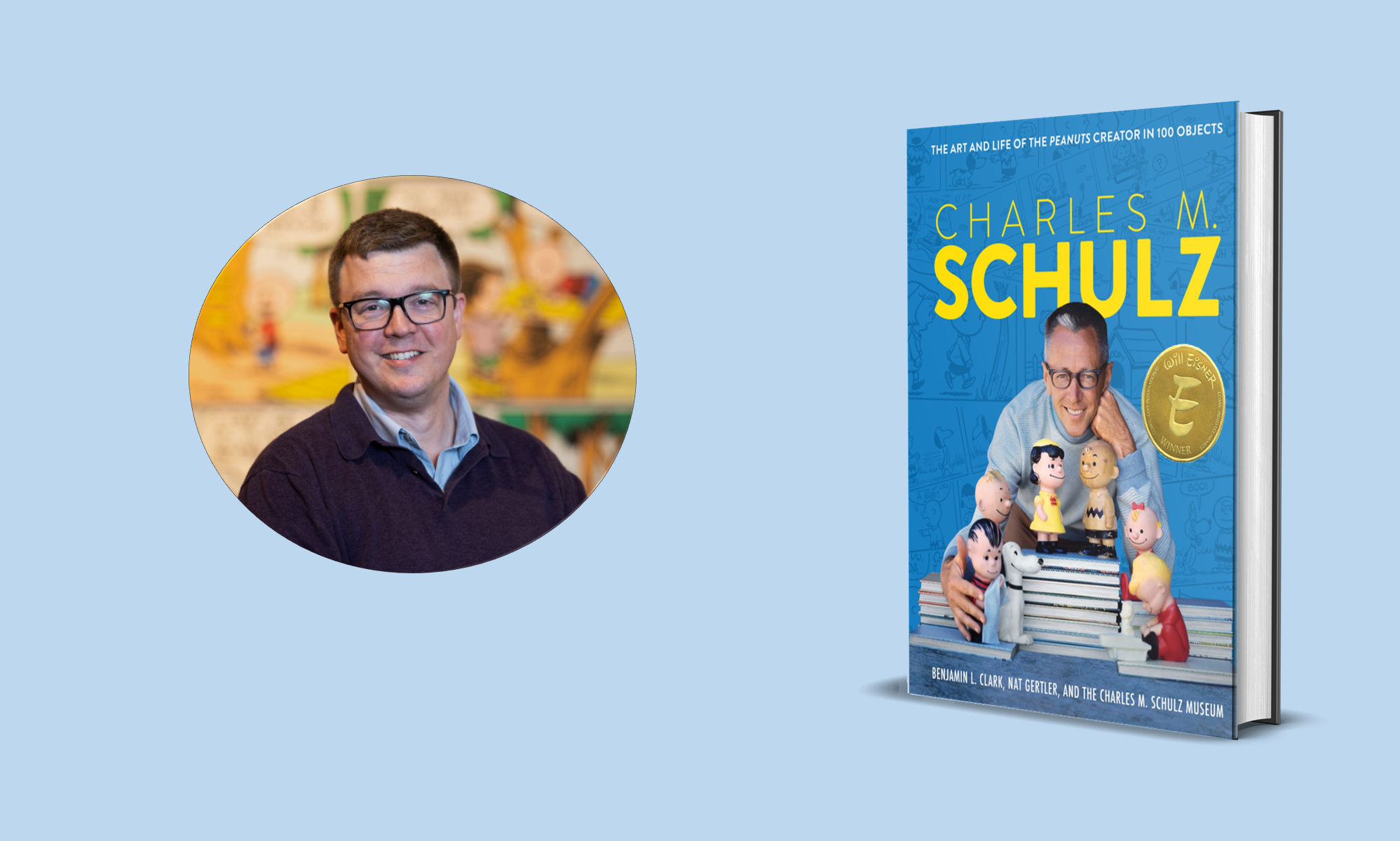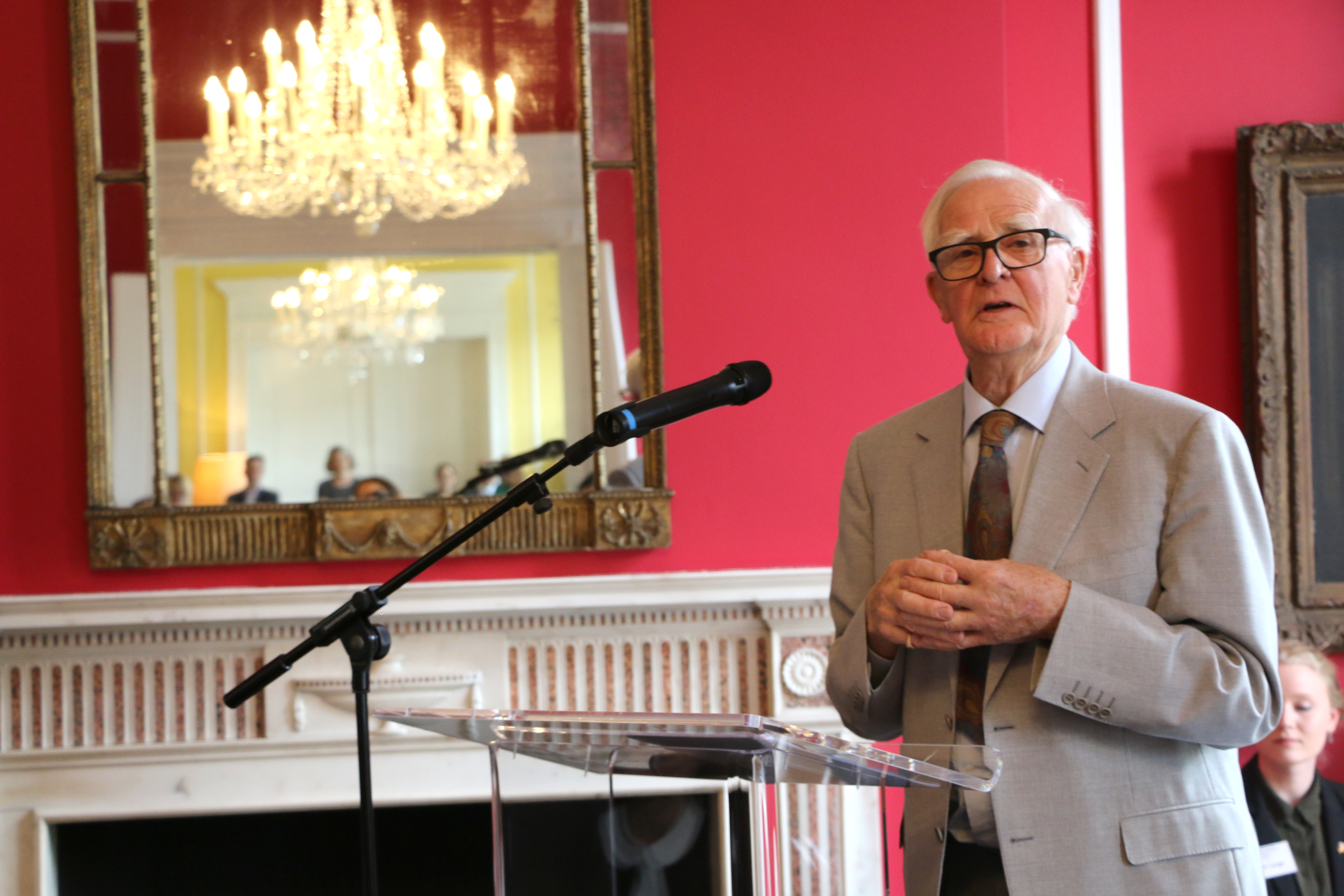
I did not know Trina Robbins very well, but she has impacted my thinking and my work. She was the kind of person that, after hearing her stories and reading her work, I have a deep appreciation for what she accomplished, and I wish I could have gotten to know her more and talked with her about something we share — a passion for the work of comics history.
I had the pleasure of meeting her a couple of times in the past few years. The first time I met Trina was when I joined her on a panel at FanExpo in San Francisco in November 2022. I remember it as the Sunday after Thanksgiving, and our panel topic was the centennial of the birth of Peanuts cartoonist Charles M. Schulz. Cartoonist and maze master Joe Wos, who organized the panel, invited Lex Fajardo, the editorial director for Schulz Creative Associates, and me (as curator of the Schulz Museum) to join him and Trina in a wide-ranging discussion of Schulz and his impact on cartooning. Trina was the only one of us to have really known Charles Schulz, bringing not only her stories of meeting Sparky (as he was known to those who knew him) but also her perspective as a Bay Area cartoonist and younger contemporary to him. It was fascinating and, of course, a lot of fun. Few people can tell the story about getting Charles Schulz to contribute a piece to a collection of cartoonists’ nude portraits.
Trina was in high demand that weekend, rushing from panel to table, signings, and other events that day. She joined us a few minutes late and had to leave the panel early for her next commitment, so I didn’t really get a chance to visit with her in that first meeting, though I got to basically sit next to her and hear her tell stories for an hour or so.
I’m so glad I remembered to bring my tape recorder with me, so I at least got audio of the panel—most of it, at least. The brand-new batteries I installed died, and I had to switch to my phone, but something went wrong—don’t try to talk on a panel and record yourself simultaneously if you can help it. At least I got a good chunk of our talk, which is now in the Schulz Museum’s archives.
The next time I saw her was at San Diego Comic-Con in July 2023, when we both had books nominated for an Eisner Award in the same category: Best Comics-Related Book. Attending the Eisner Awards is another story, but there’s a little time as people arrive and get settled in to say a few hellos. I saw her and said hello, and wished her good luck. I’m not confident she remembered me or even knew I was one of the other authors in her category, but she was very gracious. I was so overwhelmed just being in the room, so I don’t remember any other details, especially after Nat Gertler and I were announced as winning the category.
Though she was not awarded an Eisner that night (I thought she would win), her book about Gladys Parker is fabulous. Just as all of her historical work is not only well done but groundbreaking and essential reading. Comics is a rich field for study and enjoyment, enriching our lives as readers, thinkers, artists, and whole people. Trina brought that home, especially preserving, sharing, valuing, promoting, and shouting about women in comics from the rooftops.
After meeting Trina, hearing about her work, and finding her books, I looked at my own writing, my own thinking, and my own historical work and asked myself, “Where are the women?” In one project in particular that I’ve been slowly working on for a couple of years, a collection of short historical essays about the working methods of cartoonists, there were very few women initially. Now, it’s better, but there’s always room to improve. Thank you, Trina, for your work, for being wholly you.
UPDATE:
Andrew Farago compiled a wonderful collection of remembrances of Trina Robbins for The Comics Journal if you’ve not seen it yet.
About the Author: Benjamin L. Clark writes and works as a museum curator.





















 Most of my research is done through primary sources: newspapers, career guides, self-help books, medical books, etiquette guides, advertisements and so on… I also look at secondary sources, but then always pivot back to read the sources from the period that are referenced. In terms of writing historical fiction, one of the most interesting things for me is not presenting events as we might understand them today, but trying to understand how the same events were perceived during their time. So, in the case of the sleepwalker found frozen to death, in the 2010s, we would immediately question “too much schoolwork” as a cause, but in the 1910s, that opinion was backed up by doctors and medical books. And in fact, in the course of Kitty’s investigations, she speaks to a “nerve specialist” who tells her that girls who study too hard or work too much (like herself) are prone to all sorts of diseases. She has to get past that in order to solve the mystery.
Most of my research is done through primary sources: newspapers, career guides, self-help books, medical books, etiquette guides, advertisements and so on… I also look at secondary sources, but then always pivot back to read the sources from the period that are referenced. In terms of writing historical fiction, one of the most interesting things for me is not presenting events as we might understand them today, but trying to understand how the same events were perceived during their time. So, in the case of the sleepwalker found frozen to death, in the 2010s, we would immediately question “too much schoolwork” as a cause, but in the 1910s, that opinion was backed up by doctors and medical books. And in fact, in the course of Kitty’s investigations, she speaks to a “nerve specialist” who tells her that girls who study too hard or work too much (like herself) are prone to all sorts of diseases. She has to get past that in order to solve the mystery.